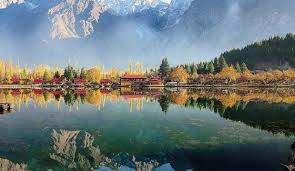Although the Bolan Pass and its adjoining railway lines, used for centuries for travel and trade, have historical significance, the dilapidated condition of the area is a testament to the fact that these areas have been neglected since the formation of Pakistan. ۔
Balochistan has been a gateway for trade caravans from Iran and Afghanistan for centuries. According to historical references, in the fifteenth century, the Aryan nations entered Sindh from Afghanistan via Chaman and then through the Bolan Pass, and this route was used several times to attack Sindh.
Historian Athir Shahwani, who compiled the history of Balochistan, writes that when the people of Balochistan, who had heard the sounds of horse-drawn carriages and camel caravans for centuries, first heard the sound of a train engine in the late eighteenth century, they began to understand the movement of the engine. Were unable to
The question that arises in many minds is why there was a need to lay a railway line in this area and how progress was made in this regard. Let’s try to find the answers to these questions in the windows of history.
When did the railway line around Bolan pass start?
Darra Bolan is a historically significant route that can be easily reached through Quetta and Kandahar. The first proposal to build a railway line in the valley was made in 1857 by the then railway chairman, William Patrick Andrew. Andrew was the spokesman for the delegation that went to see Lord Palmerston. Until 1878, it was of great military importance to connect Pishin and Kandahar by rail, and both proposals were under consideration via Harnai and Bolan Pass.
The first railway line was laid in the area in 1879 and in 1880 it was decided to expand it. Since the Bolan Pass passes through the Khum mountain ranges at the top and bottom, the surrounding areas were considered suitable for light traffic only. But later, due to heavy rains and landslides in the area, the old railway line was almost destroyed and it was decided to lay a new railway line through Harnai as it was suitable for heavy traffic. The new railway line was completed in about 4 years, and in 1887 the first train passed through the Bolan route, which is still used for travel and trade.
High and rocky cliffs were dug to make way here, at about nine places the railway line crosses the Bolan Pass. During this time, long tunnels add to the enjoyment of the train journey. And it is noteworthy that each of these tunnels is of historical significance.
- Cheese tunnel
It is one of the 25 longest tunnels in the long railway line around the Bolan Pass. It takes about three minutes for the train to pass through at normal speed. It is one mile from Paneer railway station. It is 1 mile (2.45 km) long. Beyond Paneer to Machh, there are many small tunnels, the construction of which is worth seeing. The four tunnels are so skillfully and beautifully designed like binoculars that one can stand outside the tunnel and see the other three tunnels in a line. - Windy Corner Tunnel
Windy Corner is an English word, meaning corner or narrow space. As the road to Bolan Pass becomes very narrow beyond Paneer, the British engineers who built the tunnel named it Wendy Corner Tunnel. It is located next to the Dazan railway station and is about 127 meters long. The tunnel that follows is called the Cad Cad tunnel, which is 165 meters long. Athir Abdul Qadir Shahwani, a historian from Balochistan, told DW that at one time the water of mountain springs used to flow around this railway line, which offered a view of a beautiful waterfall. But over the past two decades, due to lack of rainfall and drought in Balochistan, the Bolan Pass has dried up in many places, and even these springs have very little water, while some have dried up.
- Memory tunnel of my gene or love
The tunnel was named after the British woman Marie Jane. According to historical sources, Marie Jane was the spouse of Ogilagan, a British engineer who worked on the Bolan railway project in the late 18th century. Come and stay in the area. And often on the field with her husband. Blasting was used to pave the way for tunnel construction in the rocky cliffs. One day during the explosion, a flying rock hit Marie Jane, killing her.
Mr. O’Gallaghan and the other engineers who worked with him were shocked by the sudden death and named the tunnel after Mary Jane. It is said that there is a tomb of Jane on the mountain above the tunnel, but the traces of time have now erased its traces.
- Khojak or Kojak tunnel
Khojak was once the fourth largest tunnel in the world, but according to the new rankings, it is the eighth largest. Construction began in 1891, and over a period of about three years, hundreds of engineers and thousands of workers worked day and night to complete the masterpiece tunnel, which also used machines. Oil was brought from 40 miles away by camels to run these machines.
Its length is 3.92 km. It looks very straightforward but there are fluctuations like Kohan in the middle and as soon as the train reaches this place, the alarm engine under automatic system notifies the driver that the train has reached this place.










